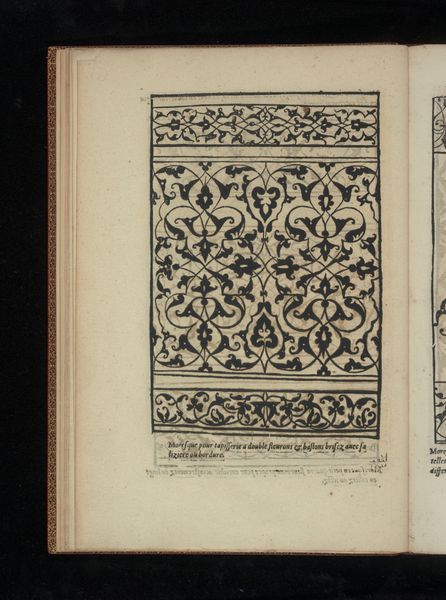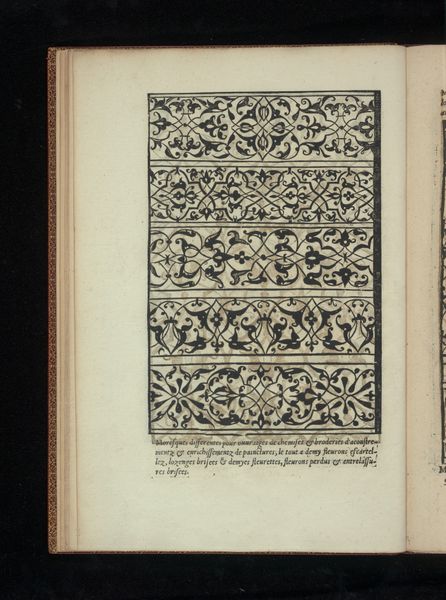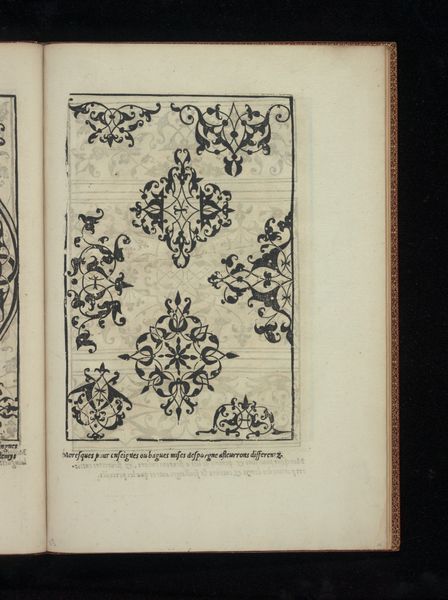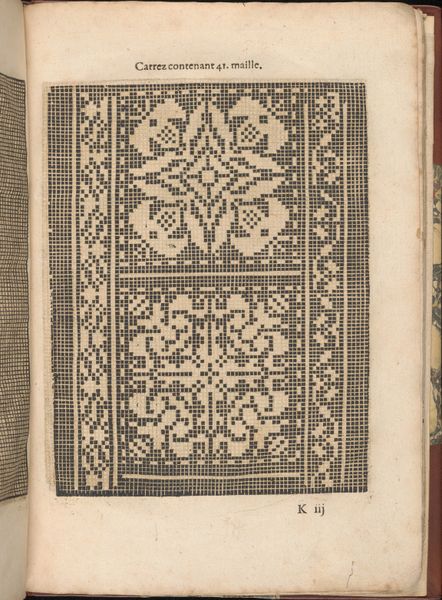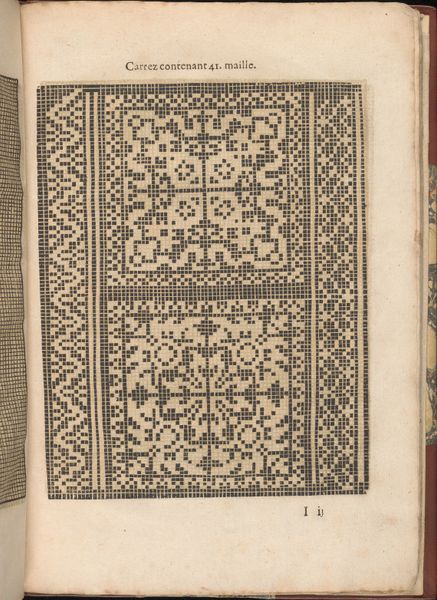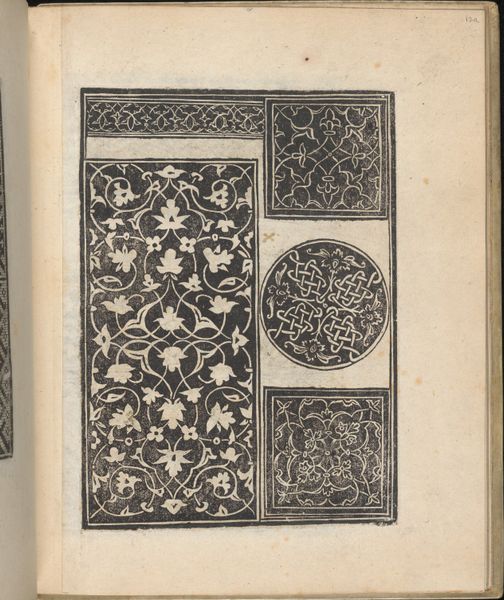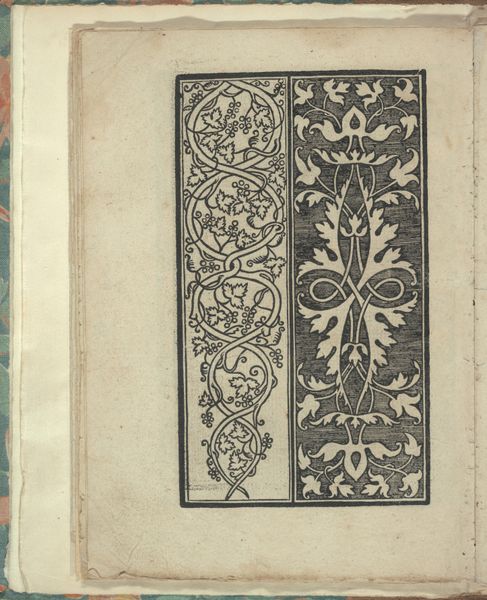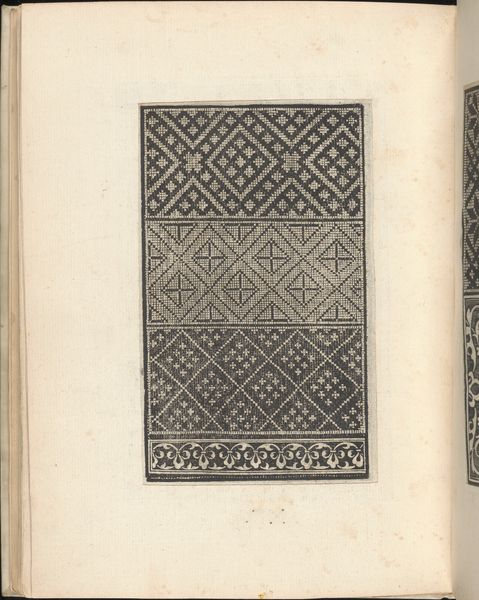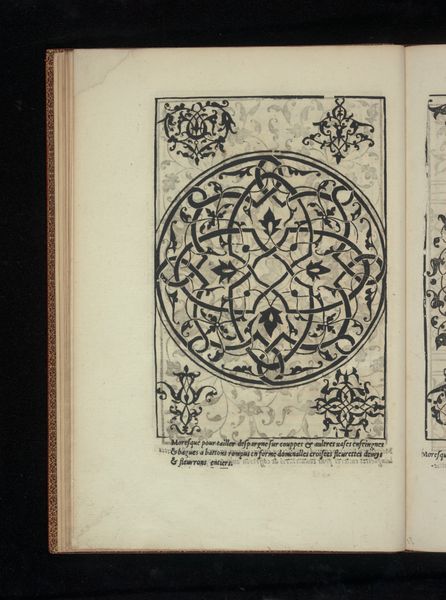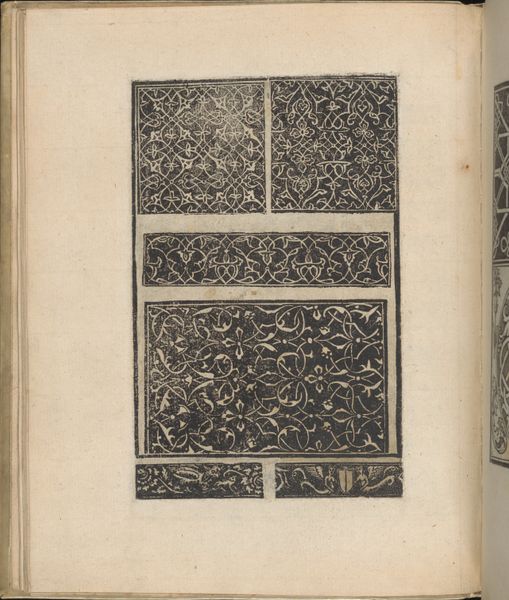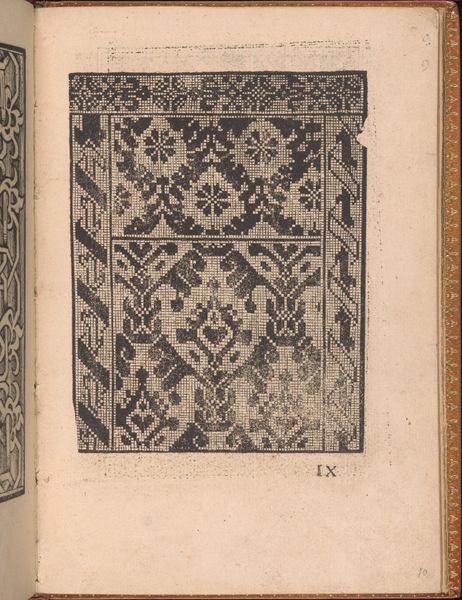
drawing, ornament, print, paper, ink, woodcut
#
drawing
#
ornament
# print
#
paper
#
11_renaissance
#
ink
#
geometric
#
woodcut
#
line
Dimensions: Overall: 12 x 8 5/16 x 1/4 in. (30.5 x 21.1 x 0.7 cm)
Copyright: Public Domain
Curator: Looking at “Livre de Moresques, page 7 (recto)”, crafted in 1546 by Francesco di Pellegrino, a woodcut on paper employing ink, I’m immediately struck by its dense interplay of geometric forms and botanical motifs. It is a dazzling testament to Renaissance design principles. Editor: My initial impression is one of intricate tension. The black ink against the stark white of the paper creates a striking contrast, while the composition evokes a certain formal rigor offset by the delicate organic pattern, yet it is difficult to decipher what exactly its societal intention is. Curator: This work provides crucial insights into the cultural exchange and aesthetic fusion characteristic of the 16th century. Di Pellegrino was deeply engaged with the "Moresque" style, itself a product of cross-cultural influences, particularly Moorish decorative traditions which were becoming exceedingly influential in Renaissance Europe. Editor: Structurally, I observe a sophisticated understanding of positive and negative space. The artist employs a clear bounding line, establishing a rigid framework within which the organic elements spiral, emphasizing the linear qualities which provide rhythm and cohesion. Curator: But it's important to consider this work within its broader social context. The spread of printed ornament books like this coincided with increased urbanization and the rise of a merchant class eager to express their newfound social mobility through material culture. Designs such as this facilitated a new accessibility and understanding of aesthetic design within a rapidly changing European society. Editor: I do concede that a focus on such things would broaden its meaning to new levels. On closer inspection, there's an interesting mirroring of shapes that generates symmetry as a conceptual focal point for the human act of contemplating nature, of taking control. Curator: Precisely, and within the political currents of that time, we have these pattern books operating almost like a template to be applied democratically for artisans across different regions or religions, so you begin to ask, who exactly did such books hope to appeal to, and why? Editor: Examining "Livre de Moresques" reveals a carefully considered composition rooted in material qualities that enhance my appreciation, whilst simultaneously, as you propose, opening pathways of analysis. Curator: Agreed, our dual approaches complement each other, revealing a fascinating intersection of aesthetics and cultural meaning of “Livre de Moresques.”
Comments
No comments
Be the first to comment and join the conversation on the ultimate creative platform.
